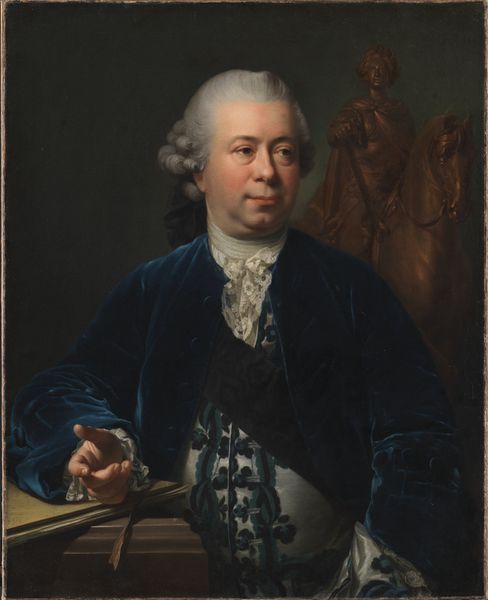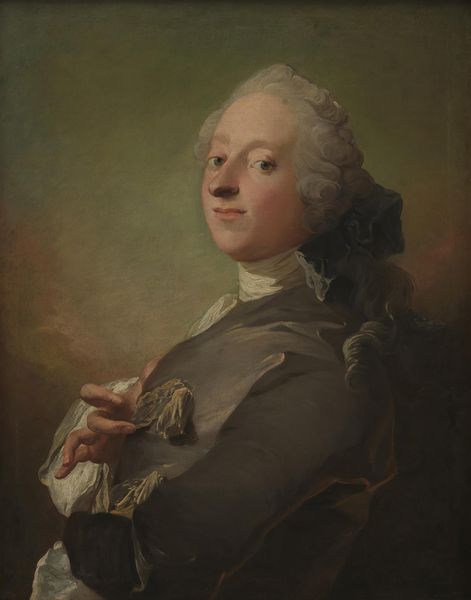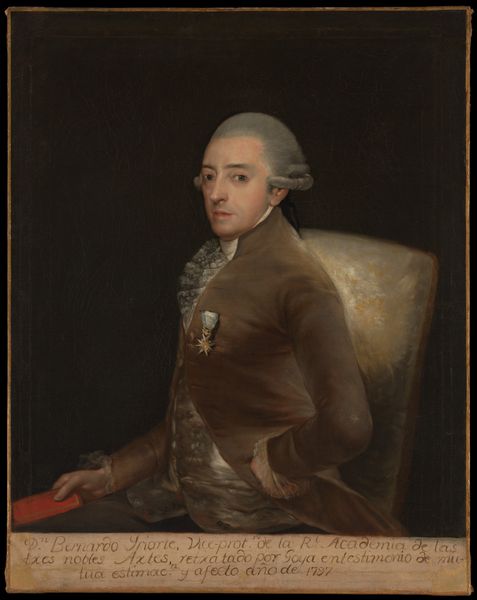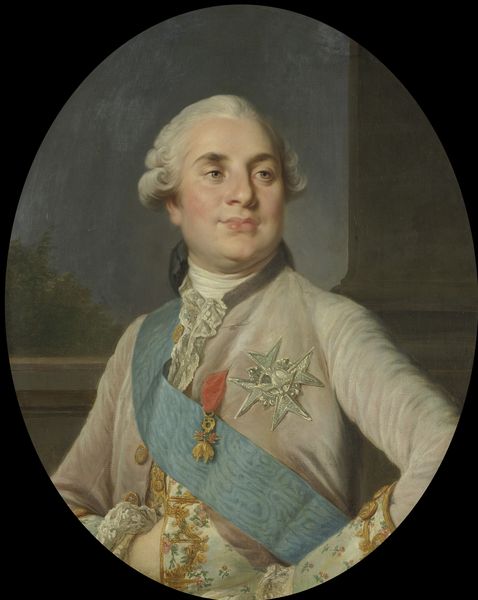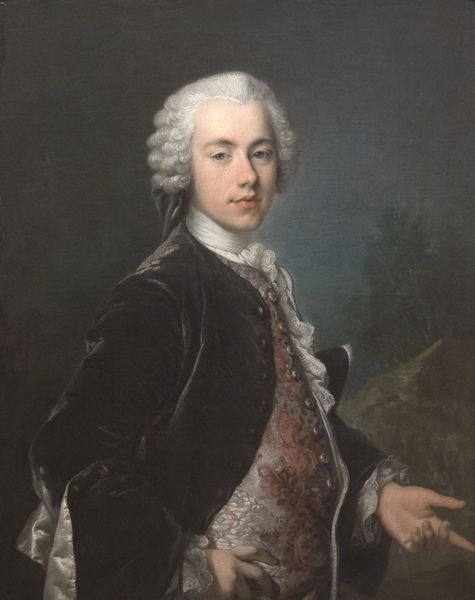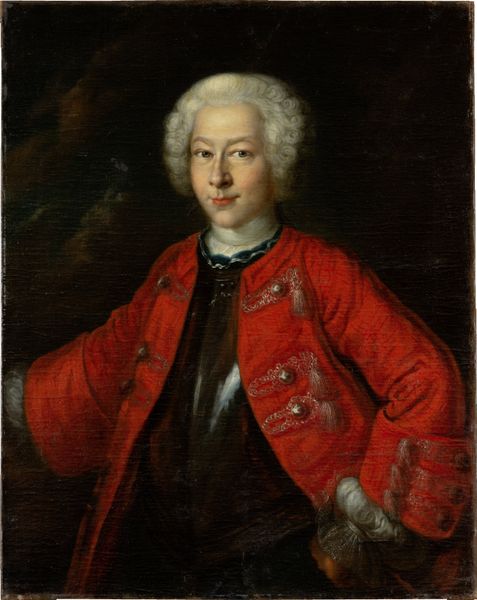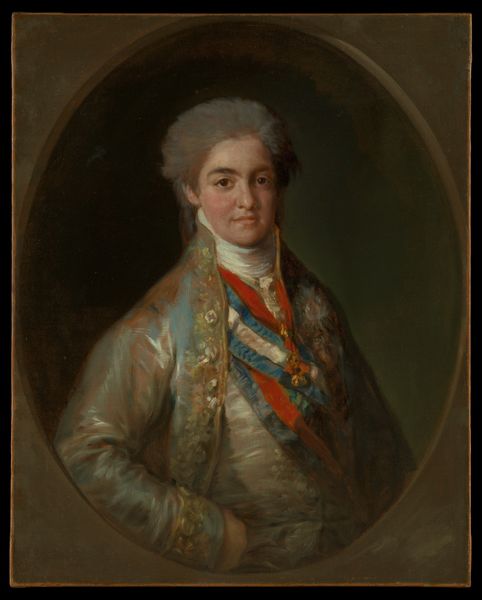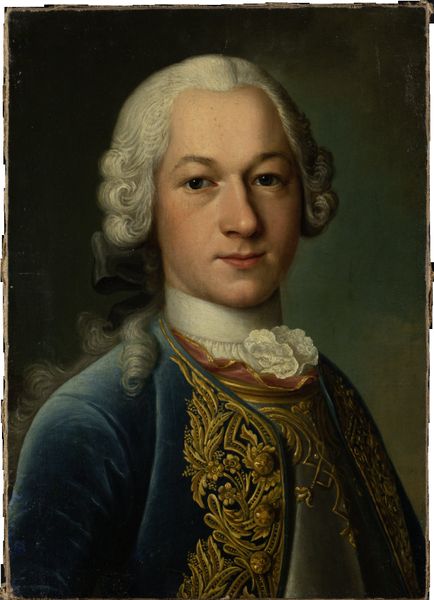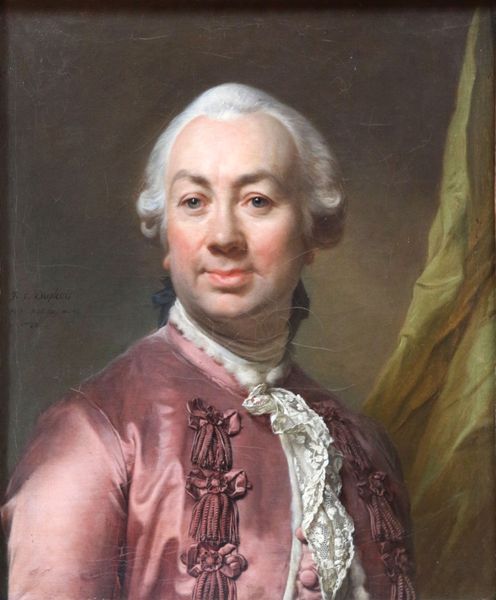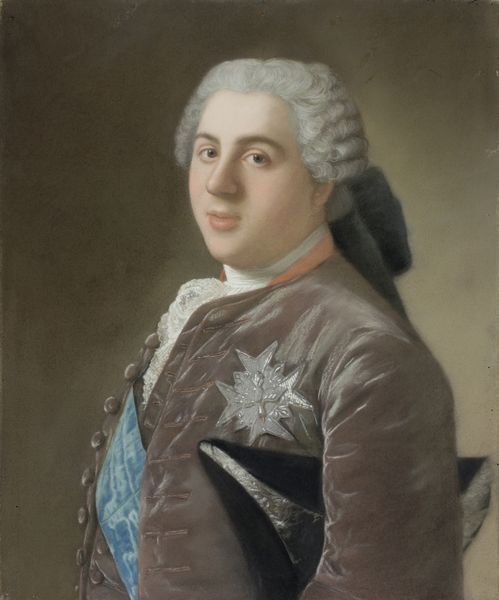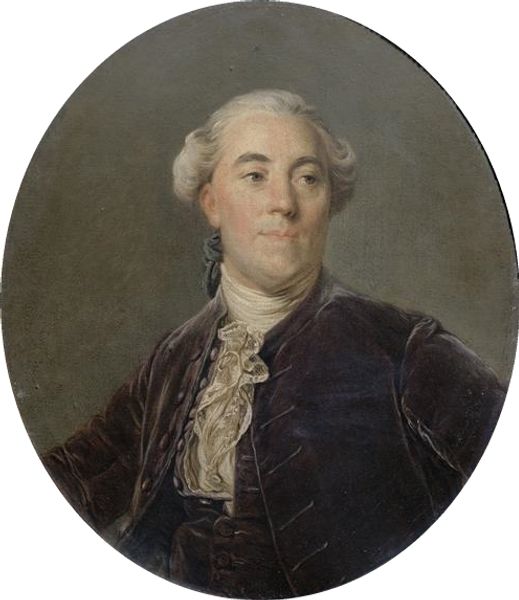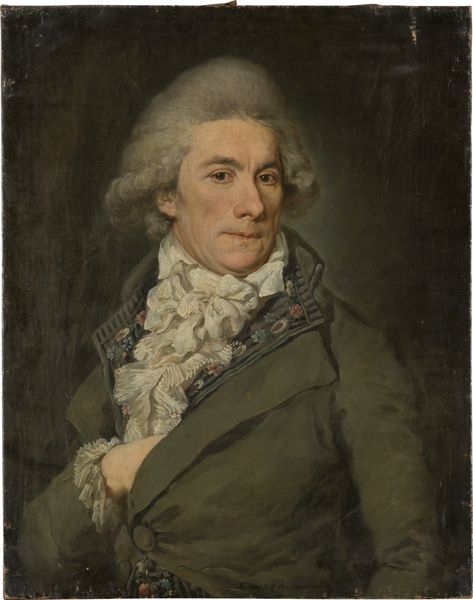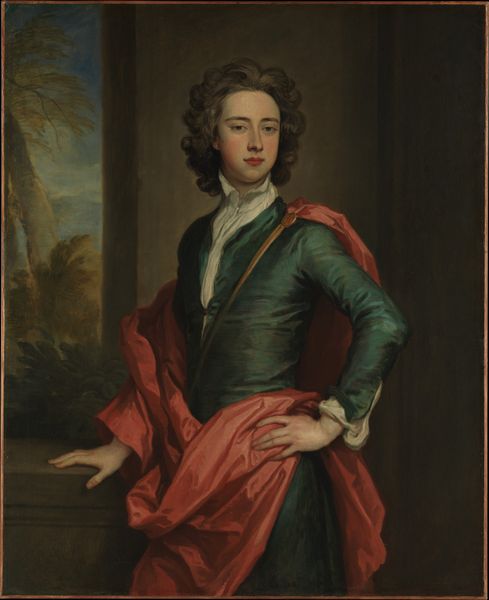
oil-paint
#
portrait
#
oil-paint
#
figuration
#
history-painting
#
academic-art
#
rococo
Dimensions: 121.8 cm (height) x 96 cm (width) (Netto)
Louis Tocqué painted this portrait of Frederik Christian Krag using oil on canvas. Consider not just the image, but the materials and labor required. Oil paint is made from pigment ground with oil, demanding skilled craftsmanship to produce vibrant colors. The canvas, woven from fibers, provides a surface ready to capture the likeness of Frederik. Now, look at the exquisite details of Krag's attire. The luxurious fabrics, lace cuffs, and meticulously tailored coat speak volumes about his social standing. These materials, sourced through extensive trade networks, highlight the global economy that supported such displays of wealth and status. Think of the weavers, dyers, and tailors involved in creating Krag’s garments, each contributing their expertise to the final product. By focusing on the materiality of this painting, we gain a richer understanding of its historical context. The portrait is not just a representation of an individual, but also a window into the social structures of labor, production, and consumption.
Comments
statensmuseumforkunst almost 2 years ago
⋮
In keeping with Rococo fashions, the artist has portrayed Frederik Christian Krag wearing a tight-fitting waistcoat and jacket, lace frills and a powdered wig with a short ponytail tied back by a silk ribbon. Specialising in portraits, the French painter Louis Tocqué was invited to Denmark by king Frederik V to contribute to the decoration of Christiansborg Palace. But the king was not the only one to benefit from the French artist’s talents; members of the aristocracy did the same. Toqué received commissions from several prominent members of the state administration, including Christian Krag. In the paternal line Krag was the last scion of an old noble Jutland family. Egeskov Palace on Funen was among the family’s many estates, and the portrait was part of its collection until 1985.
Join the conversation
Join millions of artists and users on Artera today and experience the ultimate creative platform.
